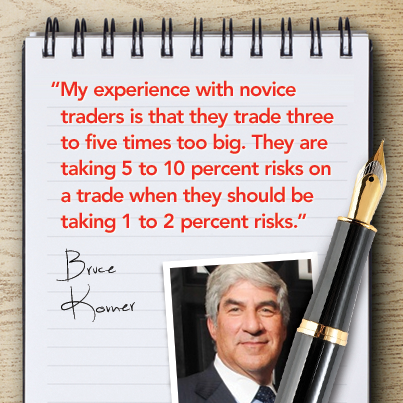Contents:


They also apply to different asset classes like equity, index, and currency products. A high level of price predictability and lower related risks result in compressed haircuts, as the lender has a high degree of certainty that when liquidated, the collateral can cover the loan amount. As an example, Treasure bills are commonly used by government securities dealers when engaging in overnight borrowing deals also referred to as repurchase agreements . In such scenarios, the haircut is negligible due to the high level of certainty regarding the value, liquidity and credit rating of the securities used as collateral. A risk-based haircut is a lowering of an asset’s recognised value less than its actual market price in finance.
So, for example, a stock with a market value of $30 may get a haircut of 20%, to $24, when an analyst or money manager tries to anticipate what is likely to happen to the price. Assets that are extremely volatile, such as stocks, might have a higher haircut compared to other types of securities. For Instance, when an individual requests a loan at a bank, the credit department sets a percentage of the entire amount, before approving the loan. The amount kept with the bank as a portion of the differential amount is called a Haircut.
This means that a $10,000 Treasury Bill can be used as collateral for a $9,000 loan, while a stock option worth the same amount ($10,000) can be used as collateral for a $7,000 loan. For example, high risk securities can have a haircut as high as 30%, whereas the haircut of lower risk securities are generally lower (around 10%). Investopedia requires writers to use primary sources to support their work. These include white papers, government data, original reporting, and interviews with industry experts. We also reference original research from other reputable publishers where appropriate. You can learn more about the standards we follow in producing accurate, unbiased content in oureditorial policy.
How a Haircut Works
In haircut meaning in finance a haircut is the percentage of an asset used as collateral that is deducted from its market value. Haircut value is the lower-than-market valuation placed on an asset when the asset is being used as collateral for a loan. The haircut value is externally determined, and the asset holder often does not have a say in the determination of the haircut value. In the fall of 2018, 14 banks and brokerage firms invested $3.6 billion in LTCM to prevent the imminent collapse of the hedge fund.
However, this amount can be increased in case the deposited securities carry liquidity or volatility risks. A haircut occurs when a financial institution or lender places a value on a collateral asset that is lower than the requested loan amount. The lender determines the haircut amount which is usually expressed as a percentage difference and it varies by institution and scenario. The lender must consider the amount of risk they would face if they are unable to sell the asset or collateral for a sufficient amount of money in case of default by the borrower. While we’re looking at haircuts in terms of loans, the term is sometimes used in investing.
You are unable to access investinganswers.com
The Options Clearing Corporation provides both the profit and loss values used to produce the portfolio margin requirement. Calculating this follows a proprietary derivation of the Cox-Ross-Rubinstein binomial option pricing model developed by the OCC. This pricing model calculates the projected liquidating prices for American-style options. The margin or difference between the actual market value of a security and the value assessed by the lending side of a transaction. A haircut is the difference between the loan amount and the value of an asset used as collateral. For example, United States Treasury bills, which are relatively safe and highly liquid assets, have little or no haircut, whereas more volatile or less marketable assets might have haircuts as high as 50%.
- While we’re looking at haircuts in terms of loans, the term is sometimes used in investing.
- The risk-based haircut methodology combines aspects ofoptions pricing theory and portfolio theory to compute capital charges.
- Short selling occurs when an investor borrows a security, sells it on the open market, and expects to buy it back later for less money.
The lender must consider what size buffer is sufficient to cover the risk of not being able to sell the asset at its current value. This will depend on the factors mentioned above, including how risky that type of asset is, i.e. how volatile its price is, and how “liquid” it is, i.e. how easy it is to sell it quickly without a loss of value. Coming back to our example, an old manor house in an area known for its thunderstorms would receive a larger haircut than a brand new two-bedroom flat in a city centre. Similarly, in a central bank context, government bonds tend to be relatively safe, liquid investments and receive a smaller haircut than bank loans, which can also be used as collateral and tend to be less liquid.
Haircut: What It Means in Finance, With Examples
For example, when an investor uses securities as collateral on a loan, the lender will usually devalue the securities by a certain amount to provide a cushion in case the market value of the securities falls. This amount may be greater if the securities the investor seeks to use as collateral are considered risky by the lender. If a lender determines there’s a high risk of loaning to the borrower, they might increase the haircut amount compared to an asset or loan that has lower risk. When a lender devalues an asset, they increase their protection in case the market value drops. If a lender ever needs to sell an asset because the borrower defaults, they calculate how much they can reasonably expect in a sale.
When they are used as collateral, securities are generally devalued, since a cushion is required by the lending parties in case the market value falls. A haircut is implemented on the value of a borrower’s assets to make sure the lender is sufficiently covered with collateral should the value of the assets decline. The term haircut is used since the market maker’s spreads are so thin. A market maker may “trim” a very small fee off of proceeds collected as part of providing liquidity in markets or facilitating trades. For these transactions, the floors must be calculated according to the formula set out in CRE56.9 below. Profit Must is being built by a passionate team with in-depth understanding of the IPO sector and stock market.

The risk-based haircut methodology combines aspects ofoptions pricing theory and portfolio theory to compute capital charges. This framework adheres to regulations set forth by the Securities and Exchange Commission net capital rule under the Securities Exchange Act of 1934. The only securities that consistently escape a haircut are US government bonds because they are considered free of default risk.
Maintenance margin, currently at 25% of the total value of the securities, is the minimum amount of equity that must be in a margin account. Margin is the money borrowed from a broker to purchase an investment and is the difference between the total value of the investment and the loan amount. Collateralization is the use of a valuable asset to secure a loan against default. This model calculates projected prices based on the daily closing underlying asset price combined with plus and minus moves at 10 equidistant data points covering a range of market movement.
When financial institutions borrow from one another, they can use other loans or assets as collateral to borrow, too. The lender needs to consider the amount of risk he would face in the event of not being able to sell the asset for a sufficient amount of money in case of default by the borrower. Risk-based haircuts reduce the recognized value of an asset below its current market value to help protect investors from having to cover a margin call.
Alternatively, margin is often stated as the collateral ratio or percentage of the purchase price. A haircut also refers to the sliver or haircut-like spreads market makers can create or have access to. The size of the haircut is largely based on the risk of the underlying asset. Suppose an investor owns a zero-coupon bond with a face value of $1000 and for some reason, the issuer agrees later to repay only $400.
On the other hand, when used as collateral, securities whose prices are highly volatile tend to have high haircuts. In common financial jargon, a haircut is also used to describe a financial loss on an investment. To “take a haircut” corresponds to accepting or receiving less than what was owed. Debt deflation is when a fall in prices, ages, and asset values leads to increases in the real burden of debt on borrowers.
What is Haircut in finance?
She began to care for the homeless and beggars in her neighborhood, giving them free haircuts and treating their wounds. A disciplinarian, he forced constant drills and training, and was rigid about uniforms and was even concerned with beards and haircuts. In 100, he states that he believes it is crazy that women have the right to choose their own haircuts. His geometric haircuts seemed to be severely cut, but were entirely lacquer-free, relying on the natural shine of the hair for effect.
4 Ways to Get Cheap Haircuts That Look Expensive – Yakima Herald-Republic
4 Ways to Get Cheap Haircuts That Look Expensive.
Posted: Fri, 10 Mar 2023 08:00:00 GMT [source]
This chapter sets out the minimum haircut floors for securities financing transactions and the treatment of portfolios that breach the floors. When you employ pledges, your risk exposure is restricted to the stocks you used as leverage. If you are unable to repay the margin, the stockbroker will liquidate the securities in your margin account to satisfy the loan. The stocks or monies in the margin account are held in trust by the stock broker.
A haircut here refers to the difference between the buying and selling price of an asset or financial instrument. If a trader were to purchase 100 shares of ABC Incorporated for $100 per share, summing up to a total cost of $10000, then sell them a moment later. They might succeed in receiving only $90 per share adding up to a total of $9000 because of market makers. The 10% difference in price is the haircut, which is the fee market makers charge to offset risk. Day traders may experience this phenomenon as market makers help provide liquidity in the market.
Brokers raise margins for Adani stocks amid rout – Economic Times
Brokers raise margins for Adani stocks amid rout.
Posted: Fri, 03 Feb 2023 08:00:00 GMT [source]
Keep an eye out if you ever need to borrow on margin from a brokerage firm. When you borrow a margin loan, your broker will put a value on the securities used as collateral for that loan. The larger the haircut, the lower the value of those securities you put up as collateral. This gives the brokerage a larger cushion in case the market price of the securities decreases. Investors seeking to access loans from brokerage firms to increase their portfolio holdings also face haircuts.
To maintain the value of collateral held by the buyer in a transaction equal to the value of the cash held by the seller, adjusted for any haircut requirement. Required by the holder of collateral in a repo, buy/sell-back or securities lending transaction, to protect against the possibility of a fall in the collateral’s price. In-scope SFTs which do not meet the haircut floors must be treated as unsecured loans to the counterparties. To obtain a loan, a promoter’s interest in a firm is utilised as collateral. Nevertheless, as the value of the stock fluctuates, so does the value of the collateral.
Technological advancement and more efficient markets have caused a decrease in several asset spreads to haircut levels. It is more expensive for retail traders to transact at the same spreads as market makers. This renders transactions with spreads at haircut levels for retail traders unprofitable. This 50% or $7500 reduction in the stock portfolio’s value used as collateral is referred to as the haircut. After the exchange’s haircut, the client will receive margin against the stocks. The haircut is the percentage amount used to cover the risk of stock price fluctuations.